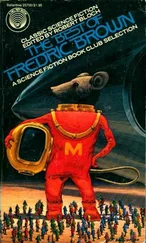“I haven’t seen the most recent one. I think the hard copy is still in Neuroimaging,” Kapinsky said.
Geoff looked him squarely in the eye, saw insecurity behind the defiant stare. “Just be more cautious and follow standard protocol next time. I don’t want any unnecessary morbidity on our team.”
“Sure, chief,” Kapinsky said.
Geoff looked over his shoulder at the empty bed next door, bed seventeen. A newly vacant bed in the NSICU meant one of three things: the patient was in neuroimaging, on the ward, or in the morgue. Geoff felt a twinge of concern. “Where’s the hang glider?”
“Transferred to the neuro ward around five this morning. He came out of drug-induced coma during the night, and the staffing in the NSICU was a little short. The bed control supervisor asked if it was okay to move him a few hours early,” Kapinsky said. “I mean, I knew we planned on sending him down to the ward today anyway, right?” Kapinsky seemed to sense Geoff’s annoyance.
“Who’s the chief resident, here, Kapinsky? The bed control supervisor is supposed to clear requests like that with me, not with the senior resident.” Geoff glared at Kapinsky.
“Well, she was going to, but I was here, so I told her not to bother calling you. I didn’t think it was that big a deal.”
“You thought wrong. Next time, bother me.” Goddamned Kapinsky. This year might be even longer than Geoff had imagined.
“Whatever you say, chief.”
Something seemed different this morning to Geoff. He wasn’t quite sure what. Maybe it was that the NSICU was quieter than usual at early morning rounds. Phones rang, nurses and medical students chatted, techs came and went, respirators hissed. Smithers. That was it. “Where’s Smithers?”
Geoff looked around the room for the cop he and Karen had admitted from the ER yesterday. The three possibilities flashed through his mind again.
“Neuroimaging,” Kapinsky said. “You wanted him to have a PET scan as soon as he was stable, right?”
“He just had major surgery yesterday and came this close to crumping.” Geoff gestured with his fingers. He felt really uneasy about this one. “He didn’t seem stable enough last night to stand the hour it would take in neuroimaging.” He gave Karen a questioning look. “Who went with him?”
“Brian Phelps and a medical student,” Karen said.
“Great. A first year resident and a med student. I hate July,” Geoff muttered.
“What?” asked Karen.
“Forget it. It’s not your fault.” Geoff looked at Kapinsky. “Did you okay this?”
“Well, yes. I mean he was stable enough to be transferred with a portable respirator—”
“Stable enough?” I don’t like you taking risks with our patients, Kapinsky.” Geoff locked stares with Kapinsky. “You had better get your act together real fast, or this is going to be a long year. For both of us.”
Kapinsky bit his upper lip, squinted, looked down. “Sorry. I was just trying to be helpful, chief.”
Geoff tensed his jaw, nodded. He turned to Karen. “I’ve got some test results to check on the computer. It shouldn’t take me long. Skip the rest of rounds and head down to neuroimaging, check on Smithers. I’ll meet you down there in five minutes.”
“Sure,” Karen said. She grabbed her clipboard off the bedside table and left.
“Kapinsky, I’ll be in the lounge. Don’t extubate or discharge anyone in the next five minutes, okay?”
“Don’t worry, chief.”
“I do ,” Geoff said. He turned and headed to the front of the NSICU, entered the house staff lounge, and sat at a vacant terminal. He had been curious all morning to find whatever records he could on Romero, search for any hint of mental illness, schizophrenia specifically. He didn’t remember much about him. The face, the name, his accent. The way he said ‘doc,’ just like in the dream. His thoughts flashed back to the disturbing nightmare, and a pulsating horseshoe appeared brightly in his mind’s eye. Geoff wanted to pull Romero’s scan, if for no other reason than to satisfy his curiosity and put the strange dream to rest.
Geoff signed on to the Traumanet system and entered Neurad, the neuroimaging database. Reviewing patient records and test results required a second level security clearance, PET scan data, third level. Geoff viewed this as a tremendous inconvenience. PETronics Corporation insisted it was essential to preserve patient confidentiality.
WELCOME TO THE NEURAD SYSTEM, DR. DAVIS. YOUR ACCESS IS CLEARED. PLEASE ENTER THE PATIENT’S NAME AND BIRTHDATE OR HOSPITAL NUMBER.
Geoff entered the patients name: Romero, Jesus.
He waited for the digitalized image to appear on the screen. The cursor pulsed for what seemed like minutes before delivering the response.
NO SCAN OR FILE WITH NAME: ROMERO, JESUS. PLEASE TRY ALTERNATE SPELLING OR ENTER HOSPITAL NUMBER.
Geoff re-entered the name using different spellings. All resulted in the same response. He switched to the patient record system, tried to pull up Romero’s medical chart and got the same message. There was no record of a Jesus Romero having been to the New York Trauma Center. Geoff rested his hand on his chin, stared blankly at the screen, tapped his finger on the desk. He knew the man had been a patient at the NYTC. Now it was as if he had never existed. Must be a computer error. Geoff made a mental note to see if there was a hard copy of the scan filed in neuroimaging, a chart in medical records. They couldn’t have vanished into thin air.
Having maneuvered through the maze of limited access elevators and corridors leading to the labyrinthine sub-basement of the PETronics Research Center, Geoff paused at the entrance to PET Scanning. Over the main doorway a large sign, its illuminated red block letters pulsating brightly, issued a stern warning. “Scan In Progress. Do Not Enter.”
“Who designed this medical center, anyway?” a voice reverberated through the hallway.
Geoff startled, turned around. “Karen? I thought you’d be inside with the patient by now.”
“So did I.” Karen shifted her stance, smiled in seeming embarrassment. “I kind of got lost. You’d think that with all of the head trauma that comes through this place, PET scanning would be right next to the ER, not in the outer reaches of Siberia.”
“It all comes down to money,” Geoff said. “And control.”
Karen wrinkled her brow. “What do you mean?”
“The reality of healthcare in the new economy, Dr. Choy. Private-public partnerships, that’s what I mean. It wasn’t a government grant or some grateful benefactor that built this research wing, Karen. PETronics Corporation bankrolled it. They designed it. They control it.”
“A medical equipment company owns this place?”
“That’s right,” Geoff said.
“So we sold out? Is that the answer?”
“I wouldn’t exactly call it that, but control is tied to purse strings. I felt the same way at first, but I spent all of last year working in Balassi’s laboratory, innumerable hours here working with the PET scanner. I was never aware of any attempt on the part of PETronics to control the basic research that was taking place. Dr. Balassi says they’re the ideal silent partner.
“I know it’s hard to believe, but they built this building, donated this state-of-the-art PET scanner, and gave Dr. Balassi, the world pioneer in PET scan research, total freedom to run the program as he sees fit. No more mountains of paperwork, grant applications to the National Institutes of Health, or competition for scant research dollars in Washington. Life’s a tradeoff. So is medicine these days.”
“Maybe,” Karen said. But it just doesn’t feel right. The same way free black bags and stethoscopes from the drug companies didn’t feel right when I graduated medical school. I donated mine to the Nicaraguan Red Cross.”
Читать дальше












